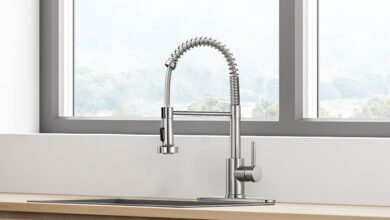The Rise of Smart Home Automation: How Technology is Reshaping Everyday Living

In recent years, the concept of smart home automation has gone from a futuristic fantasy to a practical solution for modern living. With advances in technology and the growing availability of connected devices, more homeowners are integrating smart systems into their daily routines—not just for convenience, but also for safety, energy efficiency, and enhanced control over their environment.
What is Smart Home Automation?
Smart home automation refers to a network of devices and systems within your home that can be controlled remotely or operate autonomously. These include lighting, thermostats, security cameras, door locks, entertainment systems, appliances, and more—all connected through the internet. Using a smartphone, tablet, voice assistant, or a central hub, homeowners can manage and monitor these systems with ease.
The beauty of smart home automation lies in its ability to streamline everyday tasks. Whether it’s adjusting the temperature before you get home or receiving alerts when someone enters your property, automation brings comfort and peace of mind at your fingertips.
Why Homeowners Are Turning to Smart Home Automation
One of the main reasons people are embracing smart home automation is the convenience it offers. Imagine waking up and your blinds slowly rise to let in natural light, your coffee maker turns on automatically, and the heating system adjusts based on the weather forecast—all without lifting a finger.
Energy efficiency is another significant driver. Automated thermostats, lighting systems, and appliances can help reduce energy consumption, lowering utility bills and benefiting the environment. Over time, these savings can outweigh the initial investment in smart devices.
Security is also a top priority. Many smart home automation systems include motion sensors, video surveillance, and remote locking features, allowing users to monitor and control their home’s security from anywhere. You can receive real-time alerts if suspicious activity is detected, giving you more control even when you’re not at home.
How Smart Home Automation Works
At the heart of any smart home automation system is connectivity. Devices use Wi-Fi, Bluetooth, Zigbee, or Z-Wave protocols to communicate with each other. These devices are typically managed through a centralized platform, often a mobile app or voice assistant like Alexa, Google Assistant, or Apple HomeKit.
For example, you can set up automation routines where multiple actions are triggered by a single command. Saying “Good Night” to your voice assistant could automatically lock the doors, dim the lights, adjust the thermostat, and activate security cameras.
Cloud integration allows for remote access, so even when you’re on vacation, you can check your cameras, unlock the door for a neighbor, or turn off forgotten lights. This level of control brings unmatched flexibility and reassurance.
Common Devices in a Smart Home Automation System
The range of devices that can be connected through smart home automation continues to grow. Some of the most popular include smart lighting systems that adapt to your schedule or mood, smart thermostats that learn your habits, and smart speakers that serve as command centers.
Security-focused devices like video doorbells, smart locks, and window sensors are also in high demand. For entertainment, smart TVs and streaming devices can be controlled with voice or phone, while kitchen appliances like fridges and ovens are now being designed with automation features built in.
Even robotic vacuums, sprinklers, and pet feeders are being integrated into smart ecosystems. As the technology evolves, so too does the ability to manage your home with unprecedented precision.
Challenges and Considerations
While smart home automation has many benefits, it’s not without challenges. Initial setup costs can be high depending on the size of the home and the number of devices installed. Compatibility between different brands and systems can also be an issue, although more companies are now working toward universal standards like Matter.
Privacy and cybersecurity are important concerns. Because these systems rely on internet connectivity, they can be vulnerable to hacking if not properly secured. Choosing reputable brands, keeping software up to date, and using secure passwords are essential for protecting your smart home.
Internet reliability is another factor. Many smart devices rely on a strong and stable Wi-Fi connection. In homes with poor connectivity, automation features may be limited or inconsistent.
The Future of Smart Home Automation
The future of smart home automation is full of possibilities. As artificial intelligence and machine learning become more sophisticated, smart systems will become even better at understanding human behavior and preferences.
Expect to see more seamless integration across platforms, more energy-saving innovations, and even greater focus on sustainability. Voice control will continue to evolve, and homes will become more responsive, adapting in real time to your needs, habits, and environmental conditions.
As 5G networks expand and smart devices become more affordable, more households will be able to access and benefit from this technology. Smart home automation is not just a trend—it’s quickly becoming the new standard for how we interact with and manage our living spaces.
Conclusion
Smart home automation is transforming the way we live. With enhanced comfort, increased security, and greater energy efficiency, it’s no surprise that more homeowners are investing in smart systems. As the technology continues to improve and become more accessible, automated living will soon be the norm rather than the exception.
Whether you’re just starting with a smart speaker or planning a fully connected home, the world of smart home automation offers endless opportunities to simplify and improve everyday life.




